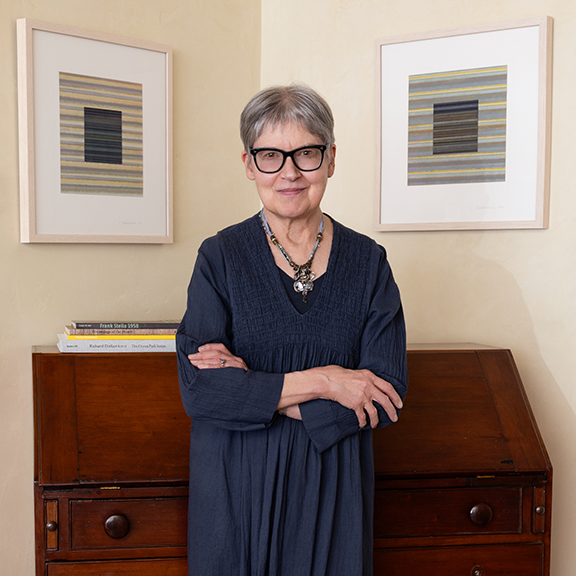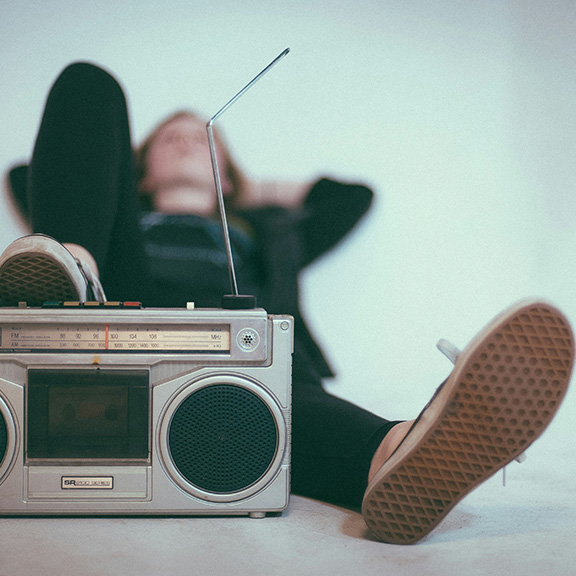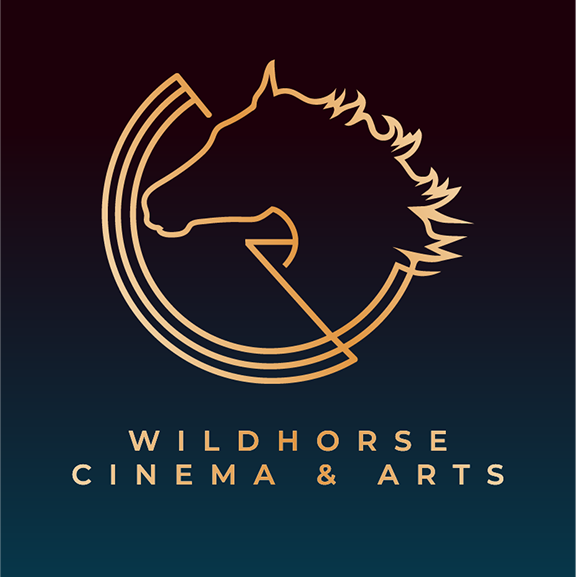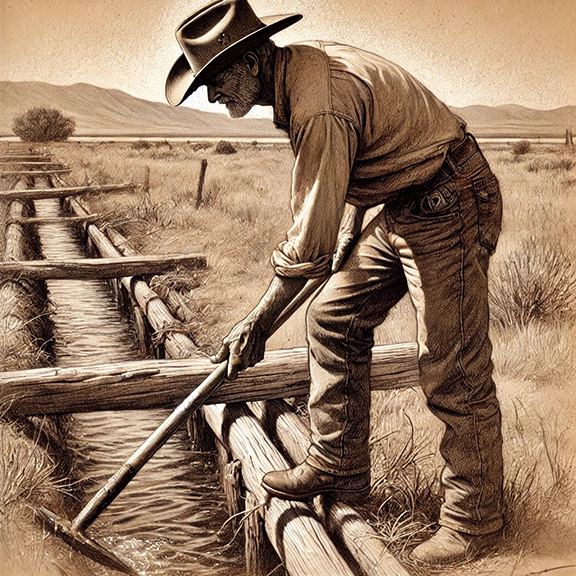The Miracle of Music
by Melissa Hampton
This article originally appeared in the Winter 2024 issue of Art with Altitude.
The small human sits under a tree patiently boring a final hole into a slim cylinder, the leg bone of a bird. It is early evening, in the year 40,000 BCE, in a land we know today as Germany. The piece of obsidian he uses is sharp, and he is careful not to break into the hollow core of the bone. Bringing the makeshift instrument to his mouth, he blows softly, placing his fingers, one at a time, over the three bored holes. This sequence of sounds, which he has learned to duplicate exactly after many tries, is a signal his tribe knows, calling them home. He is using music to communicate.
Music has been a part of the human experience for millennia. The bone flute is the earliest known example, but throughout time civilizations all over the world have experimented with natural objects to make sound, or we have created our own makeshift instruments: large conch shells were used as musical instruments in parts of the Pacific and Caribbean around 18,000 years ago; whistles and rattles, dating from 900-1500 AD, were common in early Aztec culture. The examples over the millennia are plentiful.
It seems that we are wired for music.
It is astonishing that music has been a part of the human experience since the Paleolithic era. But it’s only in recent decades that we have discovered the truly miraculous, life-changing nature of its power: 1) music can change the structure of our brain and 2) music can heal damaged brains.
And we know these things because of the invention of an extraordinary piece of technology.
Opera singer Renee Fleming lies on her back inside a large machine called an FMRI, Functional Magnetic Resonance Imaging. The soprano has graced stages all over the world, one of the luminary voices of her generation. But today, she is part of a groundbreaking experiment in the NIH (National Institutes of Health) Sound Health Initiative. Researchers are measuring what happens in her brain during three musical tasks: she is asked to sing a piece, speak the lyrics of a piece, and finally to imagine singing a piece. The result: the highest engagement from her brain comes when asked to imagine singing. Her brain lights up throughout both hemispheres. Because of this amazing machine, we know that music shimmers throughout our brain like a psychedelic light show!
The FMRI, developed in the early 1990s, was created to map brain activity. It works by using a magnet to follow blood flow (tracking the iron in our blood) as the brain registers awareness and shifts focus.
Before the invention of the FMRI, it was assumed that music “sat” in one part of the brain, as is common with other brain functions
—for example, language sits in the Broca area on the left side. Our sight is regulated in the occipital lobe. And the olfactory bulb helps us make sense of the world of odors.
Not only has the FMRI identified the areas of our brains involved in music, but more importantly, we now know how music can help heal brains damaged by either trauma or disease.
In January 2011, at a political event in Tucson, Arizona, Congresswoman Gabby Giffords was shot in the head. The bullet entered just over the left eye, tearing a path through her brain, straight through that hemisphere, which controls language and our ability to speak. Gabby’s logic, reasoning, emoting and most higher functions remained intact. She could formulate complex ideas but struggled to articulate them.
It was through music that she regained her ability to speak, precisely because music has established pathways all over our brain. A music therapist worked with Gabby, teaching her first to sing the sentence she was trying to communicate, helping her brain create new neural pathways around the damaged portion.
Over time, she learned to set the singing aside and simply say the sentence.
Music has also been a part of successful therapy for motor-impairment. Parkinson’s disease destroys our brain’s basal ganglia, which controls movement. Music therapies that include moving to music help the brain re-route around the damage, giving motion stability to Parkinson’s patients.
And patients with memory impairment (from Alzheimer’s disease or trauma-related damage) often will engage with a piece of music when they cannot engage verbally.
These therapeutic uses of music are amazing. But the most mind-blowing detail to come from FMRI brain scans is this: music can alter the very structure of our brain.
If you compare the brain scans of an engineer, carpenter, teacher and police officer, they would all appear the same, with no discernible difference in the structure of the brain according to profession.
But add to the lineup the scan of a musician’s brain and a notable difference is apparent: the corpus callosum, i.e., the thick bundle of nerve fibers that connect our left and right hemispheres, is notably larger! Scientists believe that this is because musicians use both hemispheres of the brain simultaneously when creating music.
History is filled with stories of famous thinkers, like Albert Einstein, who deliberately used music for problem solving. Einstein was a violinist and frequently turned to playing his fiddle when he was stumped by a problem. He even credits the violin with helping him come up with his Theory of Relativity!
Music is miraculous, from altering our emotional state (think what happens to your heart rate when you hear the “Jaws” music!) to healing a damaged brain to changing the structure of the brain.
And when we build music education into the lives of our youngest community members, we are giving them extraordinary tools for future success. Youngsters who study music from a young age develop stronger academic skills in math, reading, writing, and language development. Music provides an outlet for feelings and emotions. Socially, music helps in developing cooperative skills and cross-cultural awareness. There are also behavioral advantages due to the nature of practicing an instrument, such as learning patience and delayed gratification.
The Steamboat performing arts community does an incredible job of providing these experiences for our youth: the Steamboat Symphony Orchestra, Strings Music Festival, and Opera Steamboat all provide programs free of charge to schools in Routt and Moffat counties.
But here is the coolest thing of all about music: it is right here, all around us, and often free! Next time you have the opportunity to attend a free concert or enjoy a local band at happy hour, remember you’re doing your brain a favor!
Elevate the Arts: Enroll your children in music programs through the Steamboat Symphony Orchestra, attend a concert at Strings Music Festival or an Opera Steamboat performance. MH




